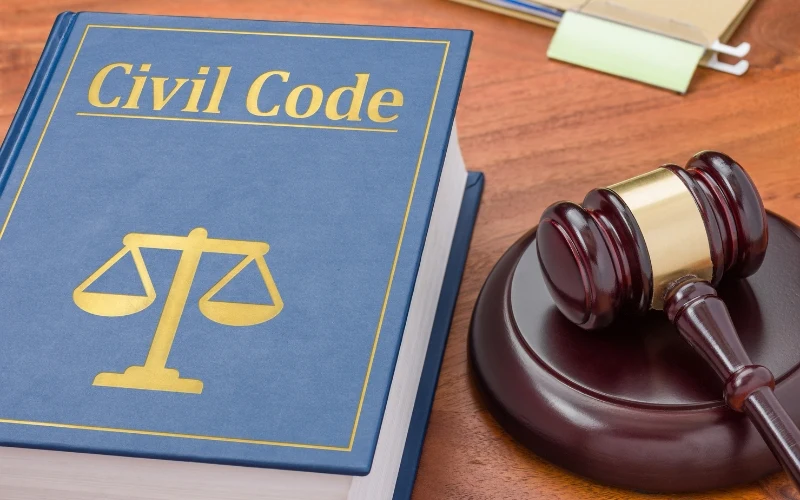Filing a civil lawsuit can be a complex and daunting process, but understanding the basic steps and key legal concepts can help you navigate the legal system effectively. A civil lawsuit involves a dispute between parties seeking resolution through the court system, typically involving issues such as contracts, property disputes, or personal injuries. This guide provides an overview of the fundamental steps involved in filing a civil lawsuit, from initial considerations to the final resolution.
Step 1: Assessing Your Case
1. Determine the Legal Basis for Your Lawsuit
Before filing a lawsuit, assess whether you have a valid legal claim. Key considerations include:
- Legal Grounds: Identify the legal grounds for your lawsuit, such as breach of contract, negligence, or defamation.
- Evidence: Evaluate whether you have sufficient evidence to support your claim, including documents, witness testimony, and other relevant information.
2. Consult with an Attorney
Consulting with an attorney is crucial for understanding the strengths and weaknesses of your case:
- Legal Advice: An attorney can provide legal advice on the viability of your claim and guide you through the legal process.
- Representation: If you decide to proceed, an attorney can represent you in court and handle legal filings and procedures.
Step 2: Preparing the Complaint

1. Drafting the Complaint
The complaint is the formal document that initiates the lawsuit and outlines your allegations and claims. It should include:
- Parties Involved: Identify the plaintiff (the party filing the lawsuit) and the defendant (the party being sued).
- Statement of Facts: Provide a detailed account of the facts and events leading to the dispute.
- Legal Claims: Clearly state the legal claims or causes of action you are asserting.
- Relief Sought: Specify the relief or remedy you are seeking, such as monetary damages or injunctive relief.
2. Filing the Complaint
Once drafted, the complaint must be filed with the appropriate court. This involves:
- Court Selection: Choose the correct court based on jurisdiction and the nature of the dispute.
- Filing Fees: Pay the required filing fees, which vary depending on the court and type of lawsuit.
- Submission: Submit the complaint to the court clerk for filing, who will provide a case number and date-stamped copy.
Step 3: Serving the Defendant
1. Service of Process
After filing the complaint, you must serve the defendant with a copy of the complaint and a summons. This process ensures that the defendant is formally notified of the lawsuit. Methods of service include:
- Personal Service: Delivering the documents directly to the defendant.
- Substituted Service: Leaving the documents with someone of suitable age and discretion at the defendant’s residence or place of business.
- Service by Mail: Sending the documents via certified mail with a return receipt requested (in some jurisdictions).
2. Proof of Service
Provide proof of service to the court, showing that the defendant has been properly notified. This may involve filing a proof of service form or affidavit with the court.
Step 4: The Defendant’s Response
1. Answer to the Complaint
The defendant has the opportunity to respond to the complaint by filing an answer. The answer should address each allegation in the complaint and may include:
- Admissions or Denials: Admit or deny the allegations made in the complaint.
- Affirmative Defenses: Assert any affirmative defenses that may bar or reduce liability.
2. Counterclaims and Crossclaims
The defendant may also file counterclaims against the plaintiff or crossclaims against other parties involved in the dispute. These additional claims should be addressed in the pleadings.
Step 5: Discovery Process
1. Gathering Evidence
During the discovery phase, both parties exchange information and evidence relevant to the case. Key discovery tools include:
- Interrogatories: Written questions that must be answered under oath.
- Requests for Production: Requests for documents or other tangible evidence.
- Depositions: Oral examinations of witnesses conducted under oath.
2. Discovery Disputes
If disputes arise during discovery, parties may file motions to compel or seek protective orders from the court to resolve issues related to evidence production.
Step 6: Pre-Trial Motions and Settlement
1. Pre-Trial Motions
Before trial, parties may file pre-trial motions to address specific legal issues or seek dismissal of the case. Common motions include:
- Motion to Dismiss: Request to dismiss the case based on legal deficiencies or lack of evidence.
- Motion for Summary Judgment: Request for judgment in favor of one party based on undisputed facts and law.
2. Settlement Negotiations
Many civil lawsuits are resolved through settlement negotiations rather than trial. Settlement involves:
- Negotiation: Parties negotiate a mutually agreeable resolution, which may involve monetary compensation or other terms.
- Settlement Agreement: Drafting and signing a settlement agreement that outlines the terms of the resolution.
Step 7: Trial and Verdict
1. Trial Preparation
If the case proceeds to trial, both parties prepare by:
- Witness Preparation: Preparing witnesses to testify and present evidence.
- Trial Briefs: Submitting trial briefs outlining legal arguments and evidence.
2. Trial Proceedings
During the trial, each party presents their case to the judge or jury, including:
- Opening Statements: Presenting an overview of the case and evidence.
- Presentation of Evidence: Introducing evidence and calling witnesses to testify.
- Closing Arguments: Summarizing the evidence and arguments presented.
3. Verdict and Judgment
After the trial, the judge or jury renders a verdict, and the court issues a judgment. The judgment may include:
- Monetary Damages: Awarding damages to the prevailing party.
- Injunctive Relief: Issuing orders requiring specific actions or prohibitions.
Step 8: Post-Trial Motions and Appeals
1. Post-Trial Motions
After the trial, parties may file post-trial motions to challenge the verdict or seek modifications. Common motions include:
- Motion for New Trial: Requesting a new trial based on procedural errors or new evidence.
- Motion for Judgment Notwithstanding the Verdict: Requesting the court to overturn the verdict based on legal grounds.
2. Appeals
If a party is dissatisfied with the trial court’s decision, they may file an appeal with a higher court. The appeal process involves:
- Notice of Appeal: Filing a notice of appeal within the specified timeframe.
- Appellate Briefs: Submitting briefs outlining legal arguments for overturning the trial court’s decision.
- Oral Argument: Presenting arguments before the appellate court, if applicable.
Conclusion
Filing a civil lawsuit involves a series of steps, from assessing your case to navigating the trial and appeal processes. By understanding each stage and working with an attorney, you can effectively manage your lawsuit and seek a resolution that addresses your legal concerns. Staying informed about the legal process and seeking professional guidance are key to successfully navigating the complexities of civil litigation.









